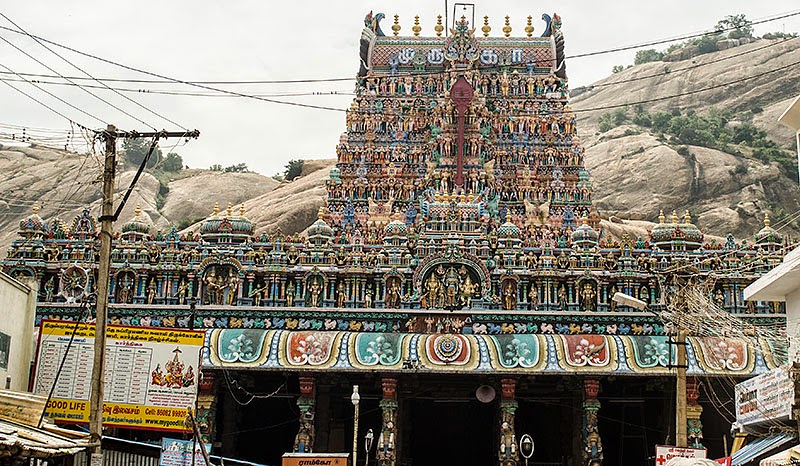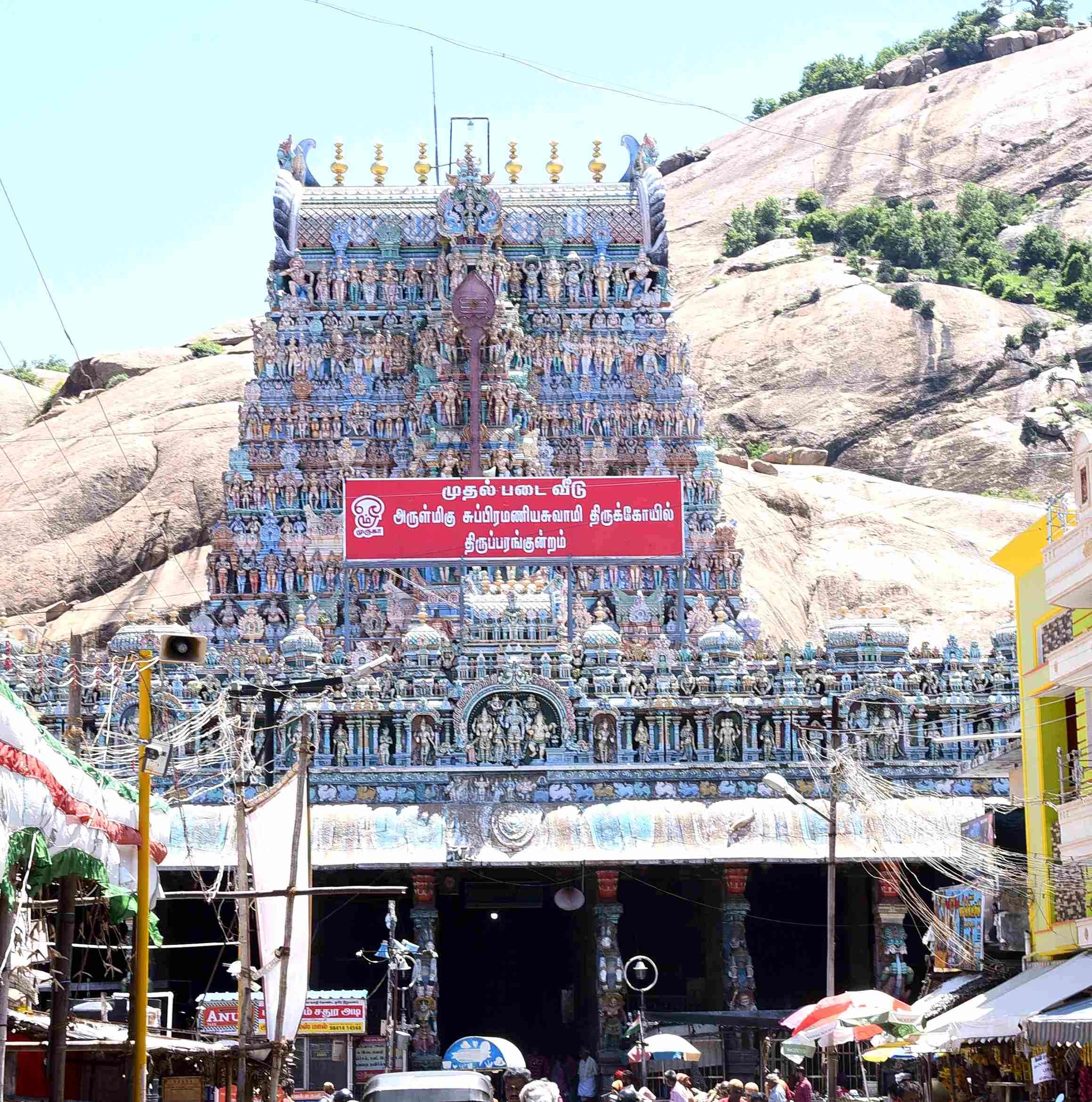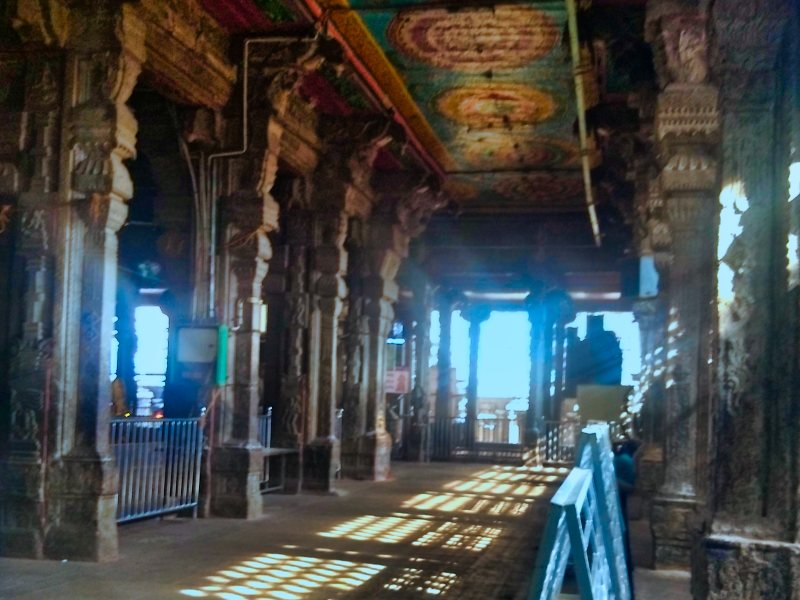The Six Abodes - Eventhough the temple at Tirupparankundram is a paadal petra sthalam, the temple has gained prominence as one of the 6 Abodes of God Muruga.
Significance of the Name - The name 'tiruparankundram' is a combination of three words: 'tiru' which is a title used to highlight its significance, 'param' representing the Almighty, and 'kundram' denoting a hill. This mountain, resembling a Shivalinga, is considered to be a manifestation of God Shiva, hence the name 'tiruparankundram'. It stands tall at an elevation of around 190 meters. In his Thevaram, Thirugnana Sambandar emphasizes the significance of every-day circumambulation and worship of this hill, stating that it can alleviate the accumulated Karma of the devotees.
This temple is at the foot hill 8 km west of Madurai. While this is a 'Shiva Temple', this remarkable cave temple is famous for being one of the six holy abodes of God Muruga, showcasing its profound spiritual importance. The temple boasts a magnificent 7-tier Rajagopuram, towering at a height of 150 feet. We can see numerous captivating sculptures on the pillars in the mandapam that is near to the gateway. Noteworthy is the sculpture of Devendran presenting his daughter Deivayanai in marriage to Muruga. Additionally, the grand Nandhi statue along with the enchanting peacock and moonjuru vahana idols adds to the allure of this mandapam.
The access to the innermost chamber of the temple is facilitated by a series of steps, leading to the sanctum which is enclosed within a cavernous structure. Parankundranathar is positioned facing east, while Karpaga Vinayaka, Goddess Durga, and Muruga face north. Lastly, Pavalakanivai Perumal faces towards the west. In order to have a glimpse of Parankundranathar and Pavalakanivai Perumal, visitors are required to pay a special entry fee and take an alternative route. Otherwise, they can only view the three shrines of Vinayaka, Durga, and Muruga from a distance.
Muruga incarnated to defeat Soorapadman and his army, saving the Devas. After defeating Soorapadman, Muruga transformed him into a peacock and a rooster, choosing the former as his divine vehicle and the latter as his emblem, bringing immense joy to the celestial beings. In gratitude, Indira offered his daughter, Deivayana, in marriage to Muruga, with the wedding taking place at Tiruparankundram. According to the Tirupparankundra Purana, the marriage rituals were conducted by Brahmma, with the Sun and the Moon holding the lamps, Parvathi and Parameswara filled with joy, and Indra presenting Deivayanai to Muruga, who then married her.
 Temple entrance
Temple entrance View of the tower
View of the tower Another view
Another view Prahara
Prahara Tiruparankundram
Tiruparankundram